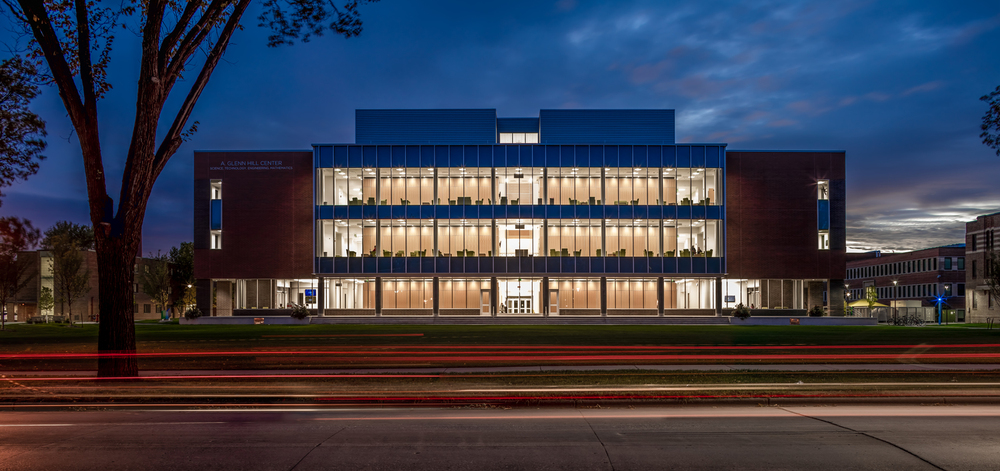Learning is more effective when it is activity-based and done collaboratively. Classroom space design can effectively support both collaborative, active learning for students and active learning pedagogies for faculty. As North Dakota State University (NDSU) started the design process for the new A. Glenn Hill Center for STEM Education in Fargo, North Dakota, one primary goal was to maximize collaborative learning and student engagement through physical layout and design.
To achieve this goal, BWBR (in collaboration with local firm Zerr Berg Architects) created a facility specifically designed with active learning classrooms, STEM laboratories, and a variety of collaboration spaces that support student needs. The facility featured five types of active learning classrooms with varying features and design strategies to support flexibility for instruction. A post-occupancy study completed by BWBR staff in partnership with NDSU faculty explores ways in which the building and classroom spaces support learning and teaching experiences


